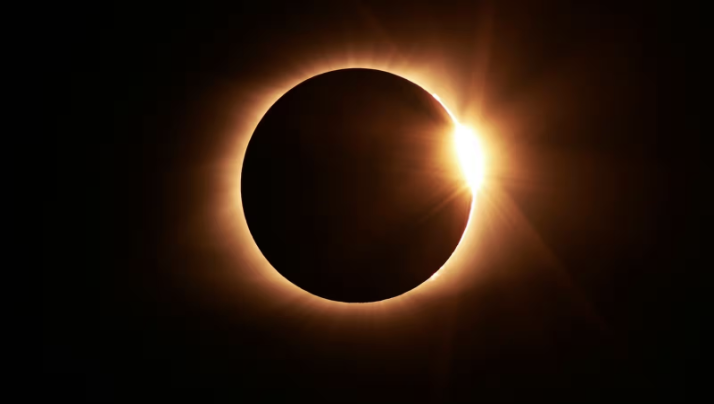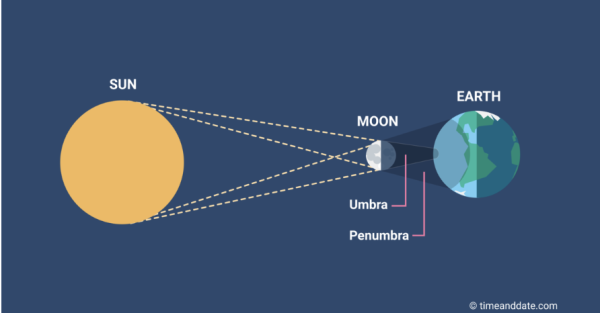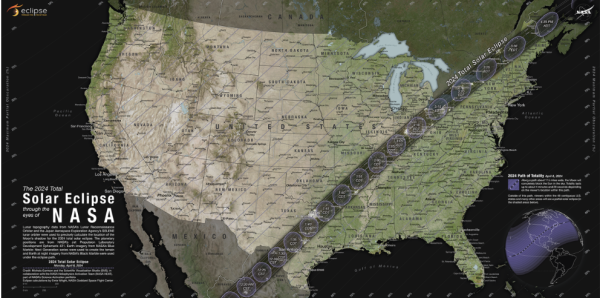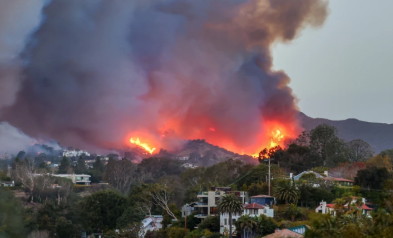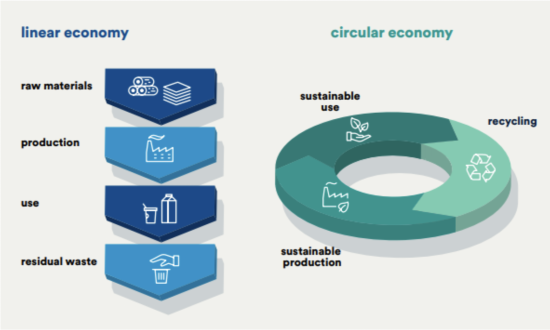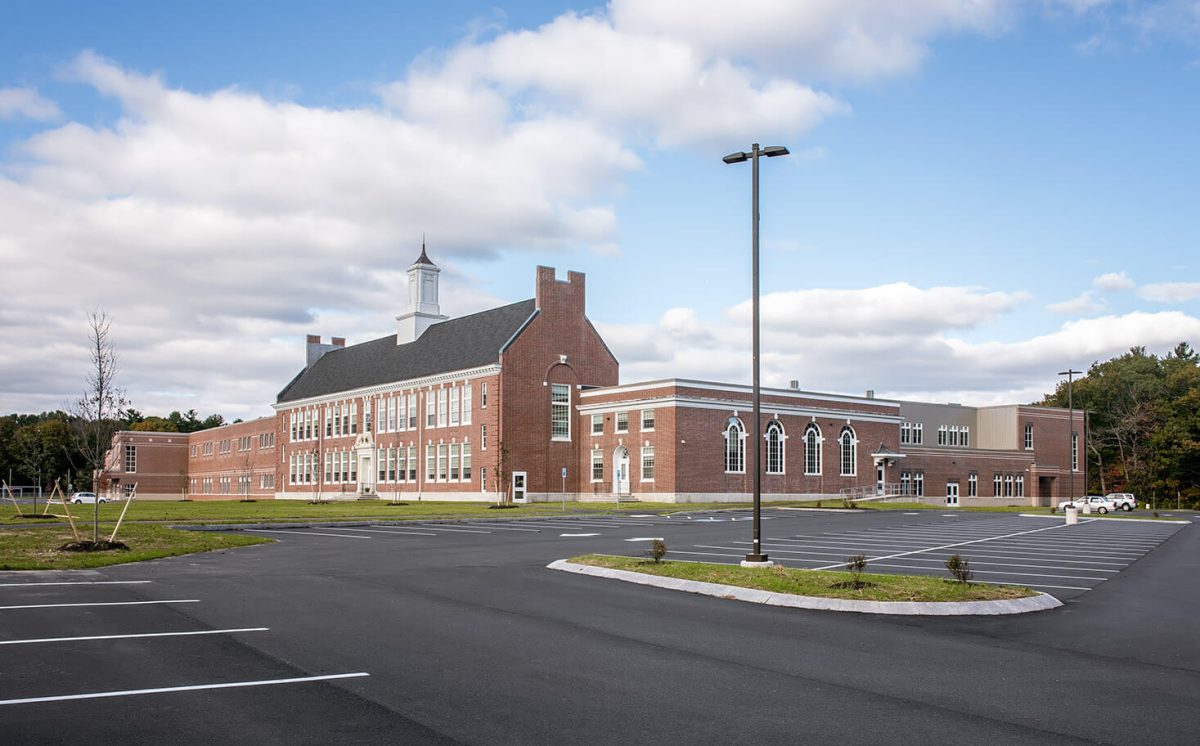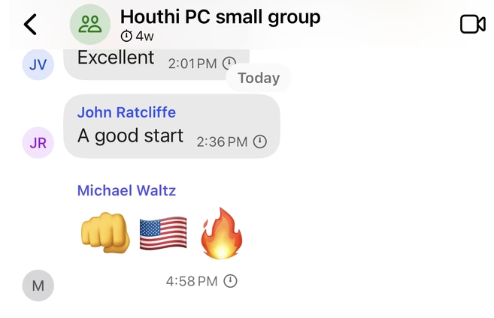More than six years ago, several states across the United States experienced a total solar eclipse. A total solar eclipse is an event where, from our perspective, the moon is passing in front of the sun (figure 1). The 2017 eclipse was viewable from Salem, Oregon to Charleston, South Carolina. Here we are, more than six years later, given another opportunity to witness another rare, stellar event– the solar eclipse.
According to NASA, one location on earth can view a total solar eclipse once every 375 years, but Earth experiences them once every few years. These eclipses are dangerous to view with the naked eye because it can injure one’s retina. To view it, one would have to wear special glasses. It is recommended that you don’t wear regular sunglasses because these solar eclipse glasses have much darker shades able to protect your eyes from the intensity of the sun’s “ring of fire.”
The upcoming total solar eclipse, also known as “the Great North American Eclipse,” will occur on Monday, April 8, 2024. It will move across North America once again, beginning in Mexico and finishing in Canada. The States that will be in the path of totality are Texas, Oklahoma, Arkansas, Missouri, Tennessee, Kentucky, Illinois, Indiana, Michigan, Ohio, Pennsylvania, New York, Vermont, New Hampshire, and Maine. While the states listed above have the path of totality, those outside of the path of totality will experience a partial solar eclipse. Kennebunk will not be in the 100% totality range, but more like 97-99%– dark enough, of course.
It will be darker than daytime with a fiery ring around the moon, like in the image above. Even if it is cloudy on that day, which there is a chance it might be, it will still be dark despite the cloudy skies. Not only will it be dark, but it will feel colder; according to NASA, there will be a temperature drop of around ten degrees.
For the time of this eclipse, it will cross the Rio Grande at around 2:30 P.M. EST. Then, it will approach San Antonio, Austin, Dallas, and Fort Worth. At around 2:50 to 3:00 P.M., the eclipse will be visible from the Midwest, and at 3:20 P.M., it reaches Toronto, Canada. By 3:20, the eclipse will be in New York, Vermont, and Canada, with Buffalo, Toronto, Rochester, Burlington and Montreal being able to see it. At around 3:30 P.M., it will be over the White Mountains of New Hampshire, and then reach Houlton, ME at 3:35 P.M. (figure 2). The link below has an animation of the Solar Eclipse from different towns and cities in Maine. It tells the coverage and the timeline of it.
Kennebunk will get to see 99% coverage, this does not mean total coverage. It is 100% coverage or 0% totality. Please note that in a 97% coverage, that 3% is important, too. If you want to see the total coverage, you might want to travel to some towns such as Jackman or Houlton. Jackman is only a three and a half hour drive while Houlton takes almost four hours to get to.
If you haven’t purchased any glasses, order them soon. The school will be providing them for all students and their families, with Oneida providing 5,000 pairs. Don’t miss this event– and if you do, better stick around to May 1, 2079 where the path of totality is from north of the Bering Strait around the Arctic Circle to U.S. cities such as Portland ME, Concord NH, Boston MA, New York NY, and Philadelphia, PA.
https://eclipse2024.org/graphics/animations/index.html?map=ME

